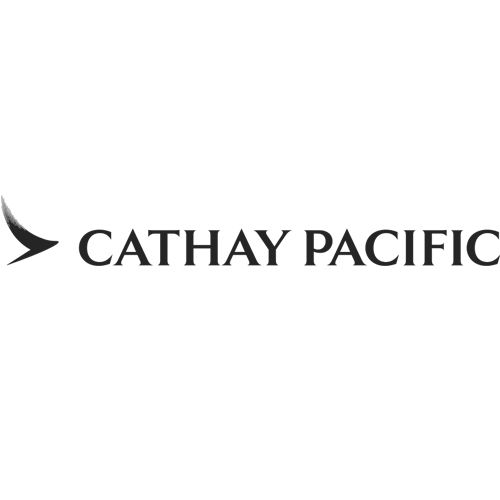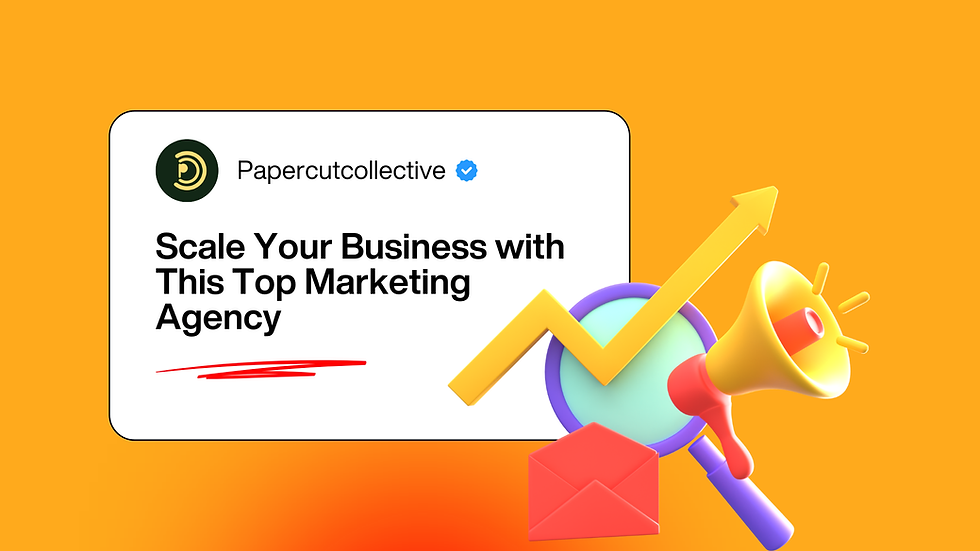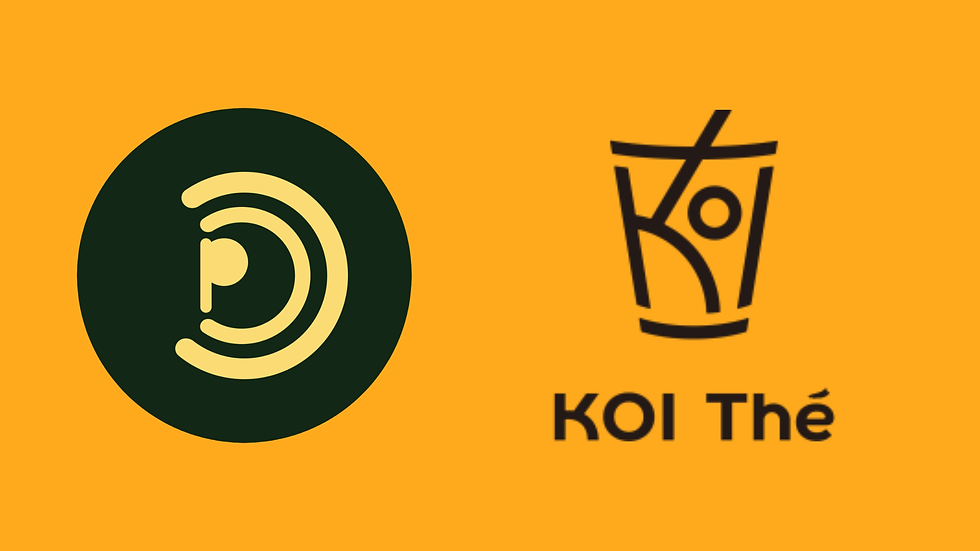Google Ads Expert in Singapore
- Tsamarah Balqis
- Oct 3
- 6 min read
Updated: Nov 26
Hiring a Google Ads expert in Singapore shouldn’t mean crossing your fingers while budgets disappear. The right specialist will make measurement rock-solid, structure Search to capture high-intent queries, keep Shopping feeds pristine, and scale Performance Max with brand guardrails backed by creative that earns clicks and landing pages that convert.

In a market with spiky seasons (11.11, 12.12, CNY), smaller TAM, and multi-market quirks, you need someone who treats Google as a learning system, not a checklist.
What a Real Google Ads Expert Actually Does
A genuine practitioner starts with truthful data. GA4 events and GTM tags are mapped to your funnel lead_submitted, add_to_cart, purchase, qualified_lead then deduplicated against platform conversions so you aren’t double-counting wins. UTMs and content IDs are standardised, PDPA consent is implemented and verified, and a blended view such as MER sits alongside channel-level ROAS. When attribution is honest, budget decisions get easier.
From there, account architecture is designed for velocity. Search marketing agency leans into theme-based ad groups where exact/phrase capture proven intent while broad runs with sensible signals. Negatives are mined daily to maintain efficiency, and extensions sitelinks, price, structured snippets expand real estate on revenue-bearing terms. Shopping becomes a performance engine once the feed is governed: titles that combine brand + model + key spec or benefit, crisp images, correct categories and GTINs, review and promo annotations. Performance Max is treated as discovery and scale, not a substitute for Search. Asset groups align to product families or intents, brand exclusions and campaign priorities protect your high-margin search themes, and query insights are reviewed so PMax doesn’t cannibalise what you already own.
Creative closes the loop. If your copy doesn’t mirror intent, you pay more for every click. Winning experts write headlines that echo the query, highlight a specific claim, and reinforce social proof. For YouTube, they prefer short spots with a clear spine hook → claim → proof → CTA so you earn a view and assist Search and Shopping. On the landing layer, micro-fixes matter: load speed, first-screen clarity, dense trust signals, and frictionless forms or checkout. Small CRO improvements make ads look smarter than they are.
Finally, cadence separates professionals from platform tourists. Expect a weekly “cut / keep / scale” summary, a visible change log, owners for dev/analytics/CRO tickets, and a short narrative on what was learned. The rhythm is simple: launch smart, learn fast, move budget to what proves it can scale without wrecking payback.
How to Evaluate a Google Ads Expert
Ask for case narratives that follow money. Baseline metrics should include CPA/CAC, ROAS, MER, or payback, plus constraints such as seasonality or margins. You want to see the exact interventions feed title overhaul, brand exclusions advertising agency singapore in PMax, query restructuring, new RSA copy, faster landers and week-by-week impact. Mature operators also show what they stopped doing: placements paused, audiences killed, angles retired.
Open the hood on broad-match mastery. Have them walk through a live or redacted example where broad turned profitable: which signals were used, how negatives were structured, how bids were protected during learning. For Shopping/PMax, ask for a feed plan: how titles are written, image standards, category mapping, and what triggers a refresh. The anti-cannibalisation playbook should be specific brand exclusions, campaign priorities, query monitoring and include examples of moving winners back to explicit Search campaigns.
Probe creative and YouTube. Request a 15–20-second script that names the problem in the first three seconds, states a single benefit, shows proof in-frame (demo, side-by-side, testimonial line), and ends with a CTA that matches the landing page. The expert should explain how winners are identified within 7–10 days first-five-seconds hold, view-through assists, branded search lift not just view counts.
Insist on process hygiene. You want naming conventions that make accounts readable, a sample change log that connects changes to outcomes, a weekly scorecard with decisions, and SLAs for landing, analytics, and feed tickets. If they can’t show artifacts, they’re probably improvising.
Singapore-Specific Nuances You Can’t Ignore
Seasonality and pacing. Peaks around 11.11, 12.12, and CNY compress learning and punish slow approvals. Great experts pre-stage promo feeds, ad variants, and budgets; they protect branded Search as social and video push awareness; and they implement dayparting or rules so spend doesn’t spike without conversion.
Multi-market details. Operating across SG/MY/ID means currency, availability, and language differences must reflect in feeds and landers. Hreflang-aware routing prevents the wrong store or language from loading, and PMax asset groups should respect regional signals instead of blending markets.
Local intent. For services, location extensions, call assets, and map-pack synergy matter. Make sure tracking credits phone calls and message conversions, not just form fills.
Regulated verticals. Policy-safe copy and compliant consent flows aren’t optional. A specialist should know where wording or audience settings trigger throttling, and how to keep delivery stable without risking disapprovals.
What Great Google Ads Looks Like in Practice
On Search, you’ll see intent-mirrored RSAs, granular extensions that answer buying questions, and a negative list that evolves daily. On digital marketing agency Shopping, keyword-rich titles and clean images are paired with promo overlays and query filtering via campaign priorities. In PMax, asset groups are organised by product intent; brand terms are excluded; new creative is fed in weekly; and query/performance insights decide where to scale or pull back. On YouTube, short ads lift branded search and grow remarketing pools; results are judged on assists and view-through, not just last-click. And across it all, CRO keeps cost per order or lead where it belongs by
removing friction you can measure.
Packages That Usually Make Sense
A Diagnostic & Action Plan over two to three weeks surfaces measurement issues, feed fixes, a re-architecture for Search/PMax, and a KPI tree with kill/scale priorities. A Velocity Sprint over six to eight weeks implements those changes, pushes YouTube and refreshed RSAs live, and runs weekly “cut / keep / scale” reviews. A Scale Retainer maintains query mining, feed optimisation, PMax expansion with brand protection, YouTube sequencing, and quarterly cohort reviews to keep growth honest.
Pricing and Hidden Costs
Most engagements run on a flat retainer or a hybrid model that combines base fee with a KPI-based bonus. What often goes unplanned: product photography and video, creator fees for YouTube, developer time for speed and tracking, and data source upgrades for feeds. Clarify who owns each line item so ROAS doesn’t get blamed for missing inputs.
Red Flags to Walk Away From
Promises of guaranteed #1 positions or ROAS, “secret hacks,” Search accounts with no negatives, set-and-forget PMax, Shopping feeds lacking GTINs or coherent titles, reports that stop at CTR and impressions, and the total absence of change logs or decision records. If they can’t show you the system, they probably don’t have one.
FAQs
How fast can CPA/ROAS stabilise? With measurement fixed and budgets that let campaigns exit learning, you’ll usually see usable signal within one to three weeks and stabilisation by weeks four to eight. Speed depends on feed quality, approval cadence, and landing fixes actually shipping.
Is Performance Max worth it for SMEs? Yes if feeds are clean, assets are strong, and brand exclusions are enforced. Treat PMax as a discovery and scale lever that complements, not replaces, Search. Monitor queries and asset-group contribution weekly.
Do we need YouTube to improve ROAS? Often, yes. Short proof-led videos expand remarketing pools and lift branded Search. Judge them on assisted conversions and view-through impact rather than last-click ROAS alone.
How do we stop PMax from cannibalising Search? Use brand exclusions, set clear campaign priorities, monitor search term insights, and move proven winners to explicit Search themes where bids and copy can be tuned for margin.
What should we track beyond ROAS? Blend platform metrics with MER, CPA/CAC, payback period, and lead quality or SQLs. Keep GA4 as the source of truth and reconcile platform claims to it so budgets follow profit, not attribution bias.
Final Recommendation
Choose a Google Ads expert in Singapore who can prove clean tracking, feed discipline, and controlled PMax scale with intent-mirrored copy, short YouTube assists, and landing-page fixes that protect ROAS. Demand artifacts up front: GA4 map, feed plan, brand-safety rules, a change log, and a weekly decision cadence. When those elements are in place, Google stops being a gamble and becomes an accountable growth engine.
If you’d like a neutral, senior review and a Singapore-specific plan you can run with your current team or vendor:
👉 Book a free 20-minute audit at papercutsg.com.

.png)
.png)
.png)



























.jpg)